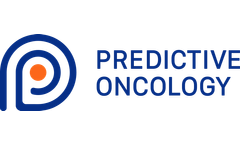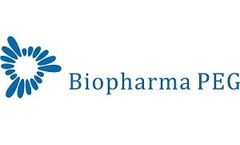Drugs Which Target Articles & Analysis: This-Year
14 articles found
Ligation (E3): The E3 ligase is the true matchmaker. It recognizes a specific target protein and facilitates the final transfer of ubiquitin from the E2 enzyme to that protein. ...
The Hidden Language of Glycans Imagine a vast molecular conversation happening within and between cells—where sugar-based structures act as sophisticated messengers carrying critical biological information. These complex carbohydrate structures, known as glycans, represent far more than simple decorative elements on proteins and lipids. They constitute an intricate "glycocode" that ...
In this white paper, Predictive Oncology (POAI) highlights a recent successful project in partnership with the University of Michigan Natural Products Discovery Core (NPDC) through the ACE program. The ACE program supports academic researchers in their early drug discovery and development initiatives by providing access to the POAI proprietary active machine learning platform and ...
In the realm of pharmacology and drug development, the assessment of drug permeability is essential. One of the most widely recognized in vitro models for evaluating the intestinal absorption of compounds is the Caco-2 permeability assay. ...
The presence of nitrogen affects the solubility, stability, and bioavailability of a drug, significantly influencing its overall effectiveness as an antibiotic. ...
Antibody-Drug Conjugates (ADCs) represent a groundbreaking advancement in targeted cancer therapy, combining the specificity of antibodies with the potency of cytotoxic drugs. ...
Watertown, MA – March 24, 2025 – Biopharma PEG, a leading supplier of high-quality polyethylene glycol (PEG) derivatives, highlights its innovative product DSPE-PEG-Mannose, an advanced biomedical polymer with significant potential in drug delivery, tumor-targeted therapy, tissue recognition, and adhesion.Structural Advantages of DSPE-PEG-MannoseDSPE-PEG-Mannose is composed of three key ...
The classification of anti-tumor APIs often falls into four main types: chemotherapy drugs, targeted therapy drugs, immunotherapy drugs, and hormone therapy drugs. Each of these targets the malignancy through different mechanisms, offering multiple ways to tackle the disease. ...
Introduction Custom knockout cell lines represent a groundbreaking advancement in molecular biology and genetics, allowing researchers to manipulate genes with precision and study their functions in a controlled environment. By creating cell lines with specific genes “knocked out,” scientists can investigate disease mechanisms, screen drug candidates, and develop gene therapies more ...
Various factors contribute to this phenomenon, including genetic mutations, alterations in drug targets, enhanced drug efflux, and changes in metabolic pathways. ...
Their unique chemical properties, such as reactivity and ability to form diverse structures, make them invaluable in drug synthesis and other industrial applications. This article delves into the chemical characteristics of phosphorus compounds, their applications in drug development, and their significance in enhancing laboratory efficiency. ...
Unlike traditional metabolomics, which primarily quantifies the concentration of metabolites in cells, Metabolic Flux Analysis focuses on the rates of metabolic reactions. ...
Furthermore, the presence of multiple isoforms of receptor proteins can lead to variations in drug efficacy and safety. Therefore, a comprehensive understanding of receptor biology is essential for successful drug targeting. ...
This article explores the profound impact of nanotechnology on drug delivery systems and its correlation with formulation development services Enhanced Drug Delivery and Targeting One of the most significant contributions of nanotechnology to pharmaceutical formulations is its ability to enhance drug delivery and ...







